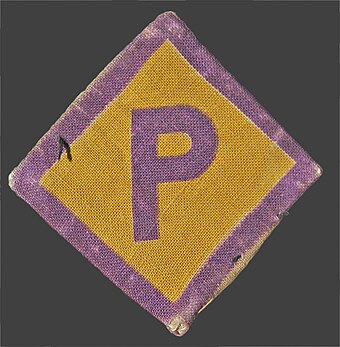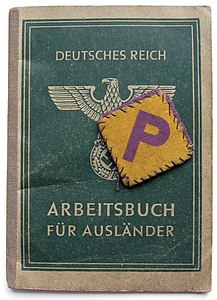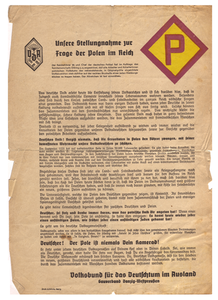
The "P" symbol [1] or "P" badge [2] was introduced on 8 March 1940 by the Nazi Germany General Government with relation to the requirement that Polish workers ( Zivilarbeiter ) used during World War II as forced laborers in Germany (following the German invasion and occupation of Poland in 1939) display a visible symbol marking their ethnic origin. The symbol was introduced with the intent to be used as a cloth patch, which indeed was the most common form, but also reproduced on documents (through stamps) and posters. The badge was humiliating, [2] [3] and like the similar Jewish symbol, can be seen as a badge of shame. [4]

The General Government, also referred to as the General Governorate for the occupied Polish Region, was a German zone of occupation established after the joint invasion of Poland by Nazi Germany and the Soviet Union in 1939 at the onset of World War II. The newly occupied Second Polish Republic was split into three zones: the General Government in its centre, Polish areas annexed by Nazi Germany in the west, and Polish areas annexed by the Soviet Union in the east. The territory was expanded substantially in 1941 to include the new District of Galicia.

The Poles, commonly referred to as the Polish people, are a nation and West Slavic ethnic group native to Poland in Central Europe who share a common ancestry, culture, history, and are native speakers of the Polish language. The population of self-declared Poles in Poland is estimated at 37,394,000 out of an overall population of 38,538,000, of whom 36,522,000 declared Polish alone.

Zivilarbeiter refers primarily to ethnic Polish residents from the General Government, used during World War II as forced laborers in the Third Reich. The residents of occupied Poland were conscripted on the basis of the so-called Polish decrees (Polenerlasse), and were subject to discriminatory regulation.



